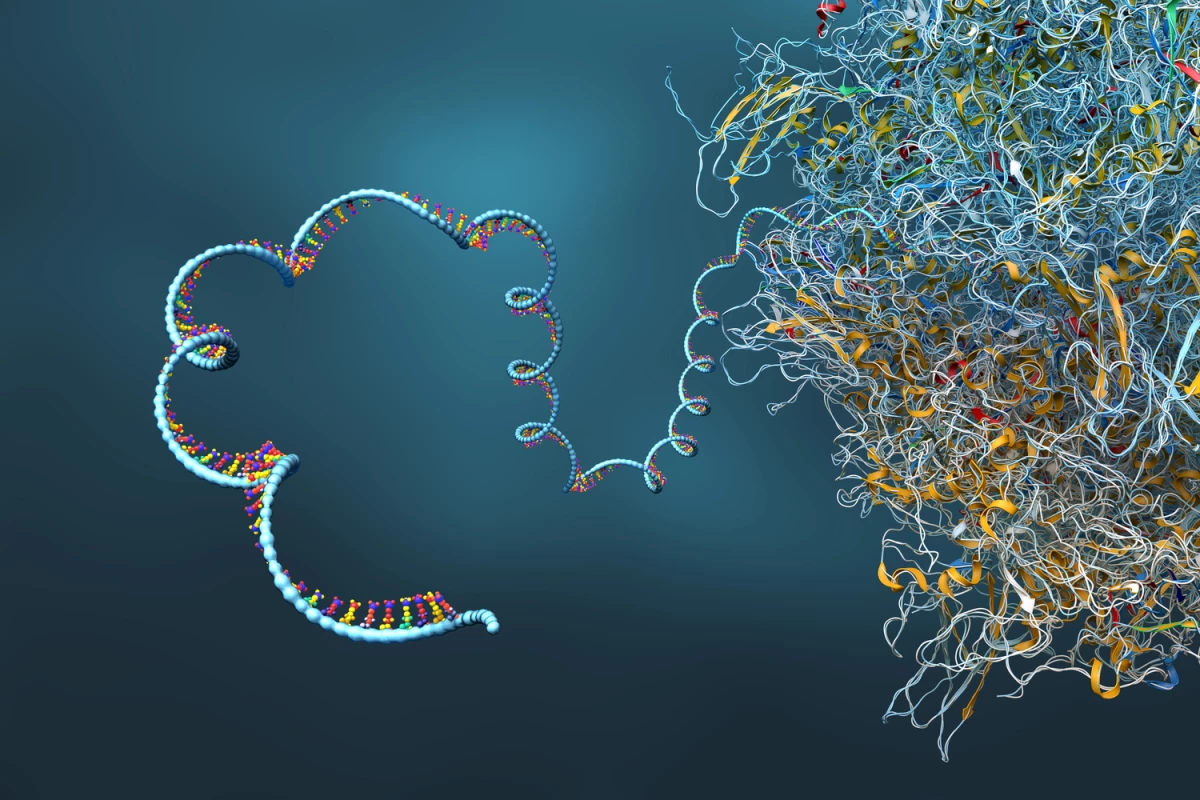Researchers have discovered that mice possess a natural form of gene therapy, a non-coding RNA that can sidestep genetic mutations. They were able to engineer a programmable version that recognized specific genetic mutations and might be used to treat genetic diseases in humans.
Before they become mature messenger RNAs (mRNAs), pre-mRNAs are modified inside the cell’s nucleus. Introns, the non-coding sections of RNA, are removed, and exons – the coding sections – are spliced together to form a mature mRNA. The mature mRNA is then exported to the cytoplasm, where the cell’s ribosome ‘machinery’ decodes its genetic information into the proteins needed for cellular processes.
But RNA can also regulate gene activity by way of non-coding RNAs, whose genetic sequence is not used to generate proteins. One such non-coding RNA is 4.5SH, found only in small rodents like mice and rats. The 4.5SH gene forms a large cluster of tandem repeats, short lengths of DNA repeated multiple times in a gene, reaching over 10,000 molecules per cell.
A new study led by researchers at Hokkaido University in Japan has discovered the role of 4.5SH RNA as a means of circumventing the mutations in mouse DNA that occur during mRNA maturation.
“4.5SH RNA was discovered in the 1970s, yet despite its abundance and presence in many types of tissues, its function had remained a mystery for over 40 years,” said Shinichi Nakagawa, one of the study’s corresponding authors.
The researchers found that knocking out the 4.5SH gene from mice was lethal, causing death at the embryonic stage and suggesting that 4.5SH RNA was an essential non-coding RNA in mice.
“It was known that the mouse genome has many lethal mutations in genes that code essential proteins,” Nakagawa said. “4.5SH RNA has the ability to detoxify these mutations in bulk – essentially, it is a natural gene therapy to protect against mutations.”
RNA sequencing revealed that 4.5SH RNA protected the transcriptome – the set of all RNA transcripts, coding and non-coding – from abnormal exons that would otherwise introduce premature stop codons, signals terminating the protein translation process, or frameshift mutations, insertions or deletions that shift the way a sequence is read.
Analyzing the molecular structure of 4.5SH RNA, the researchers found it comprised two parts: a sensor module that recognizes abnormal exons and an effector module that base pairs with the abnormal exons to prevent their incorporation into mRNA through a process called alternative splicing. In alternative splicing, a mutated exon is skipped during splicing, resulting in the production of a new protein that’s functionally similar (called an isoform) without the loss of the original.
“To our knowledge, this is the first example of a naturally produced RNA that can regulate alternative splicing in a definitive on/off manner,” said Nakagawa. “Our research also suggests that a substantial portion of such non-coding RNAs may be involved in controlling alternative splicing.”

Understanding the modular structure of 4.5SH RNA allowed the researchers to engineer a programmable splicing regulator (chimeric RNA) to induce the skipping of target exons of interest. The chimeric RNA they engineered could be a useful tool for genetic engineering.
“Our discovery suggests the possibility of developing new gene therapy drugs that recognize only specific genetic mutations by modifying the sensor module of 4.5SH RNA, so we may be able to prevent toxic regions associated with disease from being expressed,” Nakagawa said.
The study was published in the journal Molecular Cell.
Source: Hokkaido University






